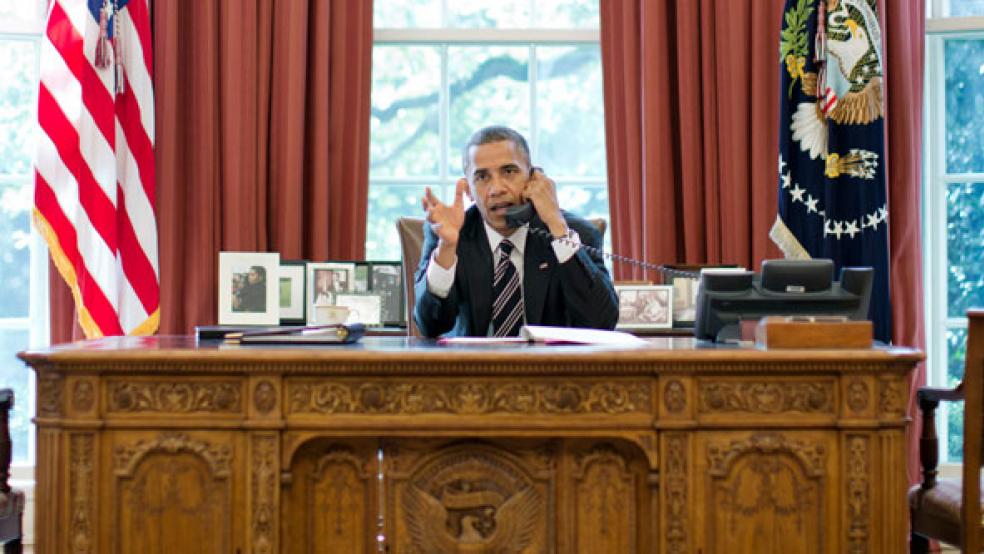The White House has not narrowed the gap between the average pay of male and female employees since President Obama’s first year in office, according to a Washington Post analysis of new salary data.
The average male White House employee currently earns about $88,600, while the average female White House employee earns about $78,400, according to White House data released Tuesday. That is a gap of 13 percent.
In 2009, male employees made an average of about $82,000, compared to an average of $72,700 earned by female employees — also a 13 percent wage gap.
Related: Obama Presses for 'Creative' Ways to Bypass Congress
One of the key reasons is that more men hold the higher-paying, senior jobs in the White House, and more women hold the lower-paying, junior jobs.
Today, there are 87 male White House officials who make more than $100,000, compared to 53 female White House officials. The gap narrows, but persists, at the highest echelons of the White House. Among the most senior officials, there are two more men than women.
Paying the People in the White House
Obama has made pay equity a central cause this year. He has pushed for hiking the minimum wage in part because it would especially benefit women, and he is advocating passage of legislation that would give women more opportunities to learn whether they are being paid a wage in line with their male peers.
“This is not a women’s issue, this is a family issue,” Obama said last month in Pittsburgh. “Women now bring in close to half of all income, and there are a whole lot of families out there where the woman is the primary breadwinner.”
White House officials say that even if the aggregate statistics show a gap, men and women in the same roles at the White House are paid similar amounts. “At the White House, we have equal pay for equal work,” said White House spokeswoman Jessica Santillo. “Men and women in equivalent roles earn equivalent salaries, and over half of our departments are run by women.”
White House officials say they have more work to do, however, and say they are working to retain and promote staff so that more women reach senior positions and the pay gap decreases. In addition, they noted that six women have received high profile promotions in the past year, including Anita Decker Breckenbridge to deputy chief of staff, Katie Beirne Fallon to legislative affairs director, and Amy Brundage to deputy communications director.
The White House pay gap is similar to the disparity within the federal government and in the region, but it is less than that for the United States as a whole. The pay gap for white collar federal workers is also 13 percent, according to a report this year by the Office of Personnel Management.
The District has a pay gap of 9.9 percent, with Maryland at 14.7 percent and Virginia at 21.2 percent. The nation overall has a 23.5 percent gap.
In the broader population, economists have found that perhaps 40 percent of the pay gap is not easily explained by factors such as occupation or educational attainment. Economists have differed on how much of the pay gap, if any, is attributable to discrimination. But most agree that one of the key issues is that women lose earning potential when they take time away from work to care for children.
The Post calculated the averages on pay disparity after determining the gender of employees through their names and basic research. A few employees could not be identified by gender, but their inclusion in the data would not have changed the overall findings.
Katie Zezima and Matt Delong contributed to this report, which originally appeared in The Washington Post.
Read more at The Washington Post:





